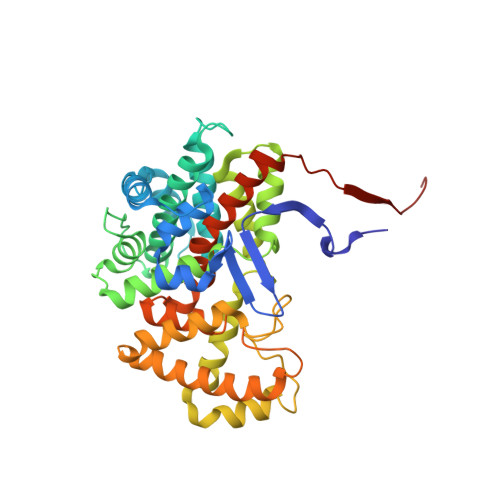Stepwise Adaptations of Citrate Synthase to Survival at Life'S Extremes. From Psychrophile to Hyperthermophile.
Bell, G.S., Russell, R.J.M., Connaris, H., Hough, D.W., Danson, M.J., Taylor, G.L.(2002) Eur J Biochem 269: 6250
- PubMed: 12473121
- DOI: https://doi.org/10.1046/j.1432-1033.2002.03344.x
- Primary Citation of Related Structures:
1O7X - PubMed Abstract:
The crystal structure of citrate synthase from the thermophilic Archaeon Sulfolobus solfataricus (optimum growth temperature = 85 degrees C) has been determined, extending the number of crystal structures of citrate synthase from different organisms to a total of five that span the temperature range over which life exists (from psychrophile to hyperthermophile). Detailed structural analysis has revealed possible molecular mechanisms that determine the different stabilities of the five proteins. The key to these mechanisms is the precise structural location of the additional interactions. As one ascends the temperature ladder, the subunit interface of this dimeric enzyme and loop regions are reinforced by complex electrostatic interactions, and there is a reduced exposure of hydrophobic surface. These observations reveal a progressive pattern of stabilization through multiple additional interactions at solvent exposed, loop and interfacial regions.
Organizational Affiliation:
Centre for Extremophile Research, Department of Biology and Biochemistry, University of Bath, UK.














